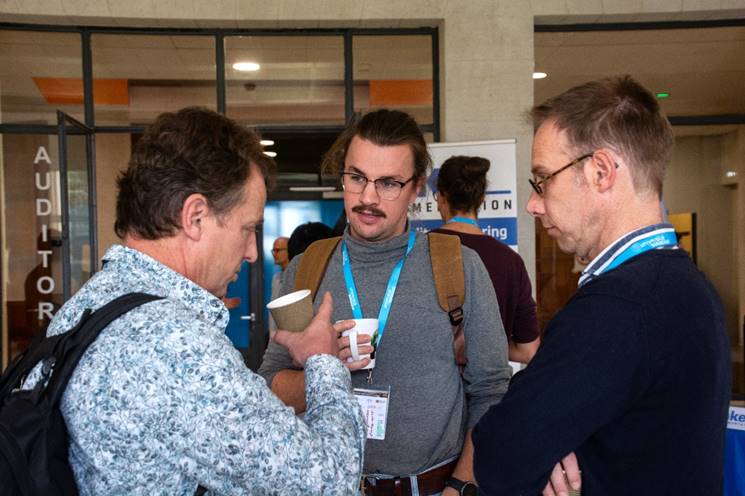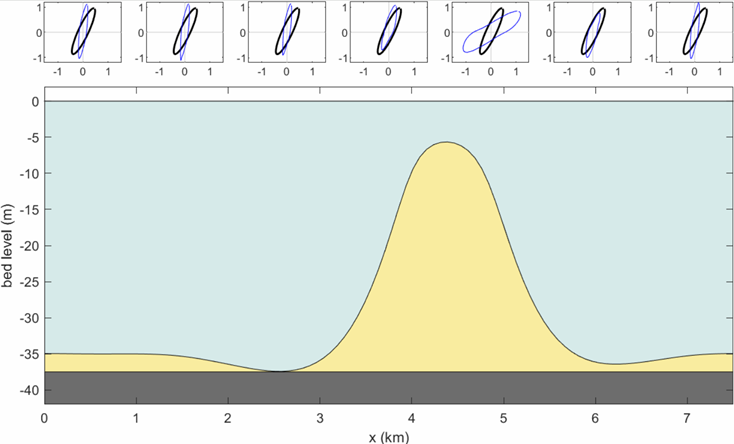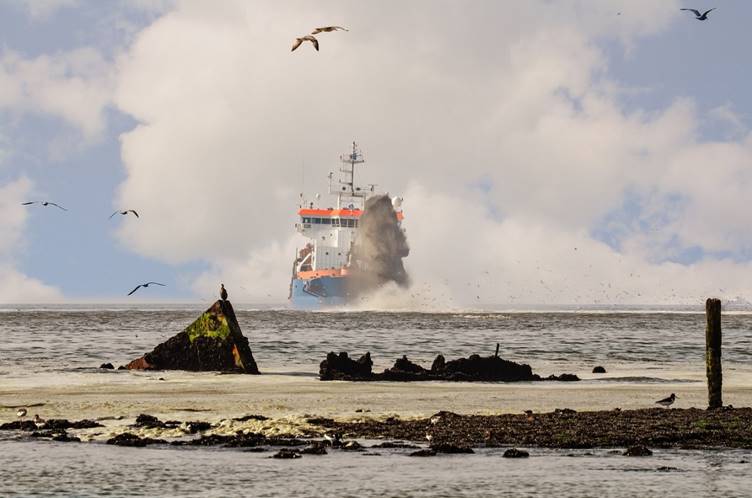Computer models show how sandbanks react and recover after sand extraction in sand-scarce regions
Interview with Sem Geerts (alumnus of Applied Mathematics & Civil Engineering and Management) by Diana Dalenoord (UT Alumni Officer).
Sem always had an interest in everything water-related and was fascinated while sailing, realising that one had to carefully account for tides and water currents to avoid sandbanks and sail as efficiently as possible. It’s no surprise, then, that he chose to do a PhD in Civil Engineering and Management (CEM) after graduating from this Master’s and the Master’s in Applied Mathematics (AM).
After completing my Bachelor's degree in Applied Mathematics, I decided to take on a new challenge in the form of a double Master’s. I continued with the Master’s in Applied Mathematics and, after a pre-Master (via a minor in module 5 of BSc-AM) in Civil Engineering, I also enrolled in the Master’s in Civil Engineering and Management. I completed this double Master’s with a combined thesis project. My thesis was titled ‘Estuarine sand dunes as a nature-based solution against salt intrusion: an idealised morphostatic model approach’, which was later published as a paper. I was supervised, among others, by Pieter Roos, also an AM alumnus who has been active within CEM for many years.

Sem and Pieter in conversation with mathematician Henk Schuttelaars from TU Delft at the PECS conference in Bordeaux, September 2024.
Academia or the corporate world?
During my studies, I wasn’t yet sure whether I wanted to stay in academia or go into industry after graduating. After a good conversation with Pieter, and after writing a paper based on my graduation work, which I had worked on for over a year, and feeling comfortable with colleagues within CEM, it became clear to me: I definitely wanted to do a PhD. In addition to research, I also have some teaching responsibilities. I’ve always enjoyed teaching, even during my studies, so that really appealed to me too.
The BANX Project: More insight into the impact of offshore sand extraction
My research takes place within the Water Systems department of the Faculty of Engineering Technology (ET). I’m involved in the BANX project, which aims to understand the dynamics of sandbanks and the effects of sand extraction in sediment-scarce areas. I’m again working with Pieter Roos and Suzanne Hulscher, as well as with researchers from the Netherlands and Belgium. Several companies and knowledge institutes are involved too, and even the United Nations (UNEP) is at the table.
Intensive sand extraction in the North Sea
Much of the sand needed for coastal nourishment, land reclamation, and construction (foundations and concrete) is extracted from offshore sandbanks. While the Netherlands has relatively abundant sand supplies, usable sand reserves in the Belgian part of the North Sea are running out. In Belgium, sand is more concentrated in sandbanks that develop and move very slowly due to tides. Between these sandbanks lie exposed non-erodible layers made up mainly of clay and coarse gravel.
Offshore sand extraction threatens the stability of sandbanks and their associated ecosystems. Sandbanks are large bedforms (kilometres long, 3–4 houses high) that form naturally due to currents. It was always assumed that they would recover naturally after dredging, but this turns out not to be the case. These sandbanks are important ecological zones, help protect the coast, and are also used for offshore wind farms. This research aims to understand the dynamics of sandbanks and the impact of sand extraction in sediment-poor environments. We do this by developing and applying physical morphodynamic models at the UT, while another PhD researcher in Brussels within the BANX project focuses on data analysis and geological models.
My role in the project
I focus on developing and analysing idealised process-based models to understand what happens when sand is extracted from a sandbank. We specifically look at systems with limited sediment availability (i.e. material transported by wind, water or ice, such as gravel, sand, silt, and clay). This kind of research has never been done before. At present, there are practically no models available. With my mathematics background, I try to rigorously underpin and validate these models. I also believe it’s important to recognise and clearly communicate a model’s limits and constraints to anyone who will use it.

Example of sandbank model output (in development). It shows a cross-section of a sandbank (in yellow) above a non-erodible layer (in grey). The small subplots at the top show tidal ellipse flow at various points in the domain.
Sand scarcity: a global-scale crisis
After water, sand is the most used raw material globally. We need it to maintain the coastline, for coastal protection due to climate change (stronger storms and rising sea levels), for infrastructure, and industry (construction). We can protect the coast through sand nourishment. Extra sand is sprayed onto the beach or seabed, which can then wash up on the shore and be blown into the dunes. In this way, nature helps protect the coast.

Is sustainable dredging possible?
If Belgium continues to extract sand at its current rate, the sand will run out before 2100. More attention must be paid to this issue, and awareness of its urgency must increase. For example, Sahara sand is unusable, and policy must be aligned with long-term insights and predictions about the impact of sand extraction. It’s therefore important to research sand extraction in Belgium, the potential disturbances it causes, and how these sandbanks recover. Evidence shows that sandbanks recover very slowly, if at all, and we don’t want to disturb the system on a larger scale. In addition to understanding what happens now during sand extraction and the recovery — the sand dynamics — we also want to investigate whether sustainable dredging is possible. The current extraction methods disturb or bury marine life under shifted sediment. Our project aims to understand how this works. It’s very difficult to model due to the timescales involved and the lack of validation data, but we have confidence in the models that incorporate essential physics.







